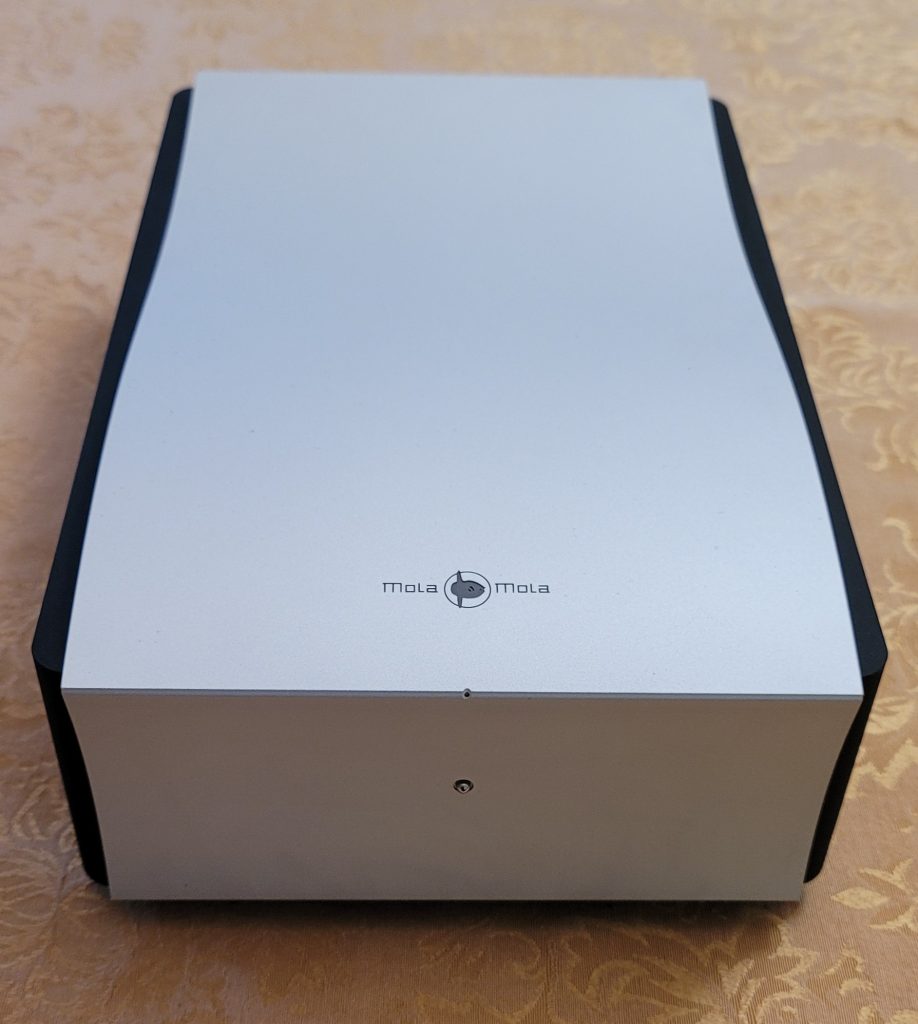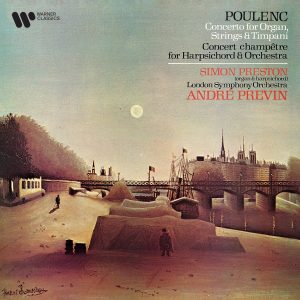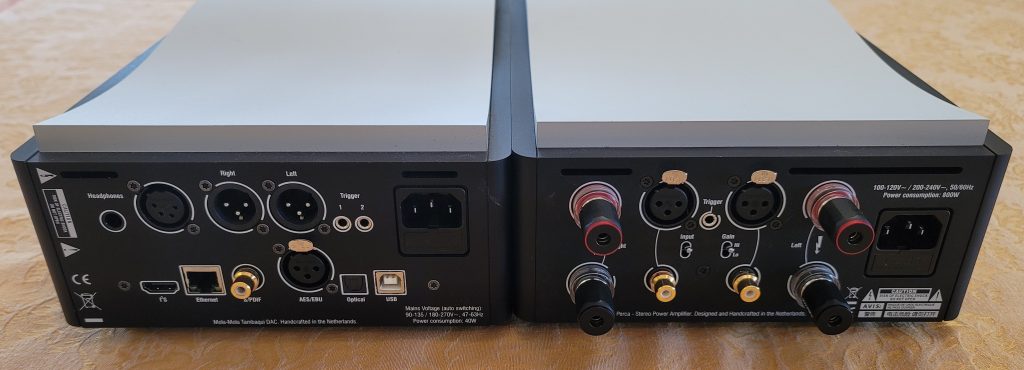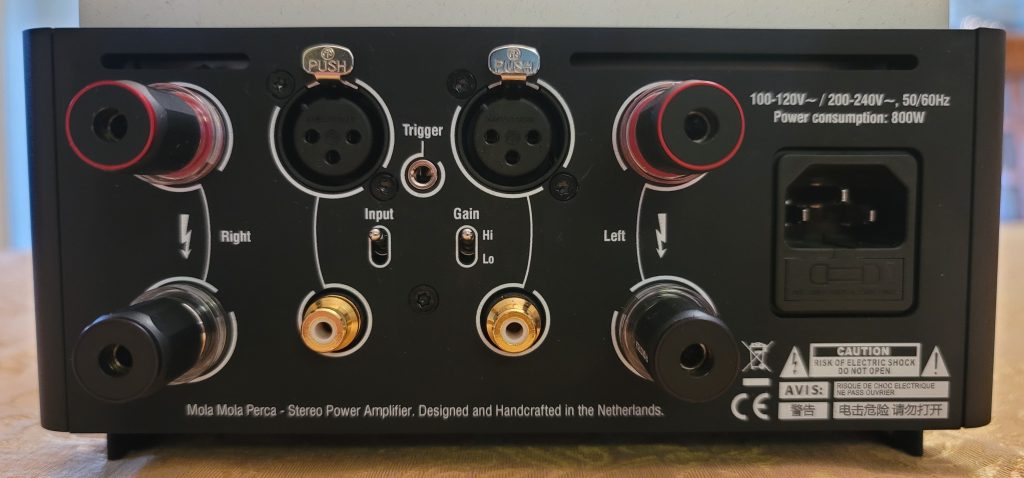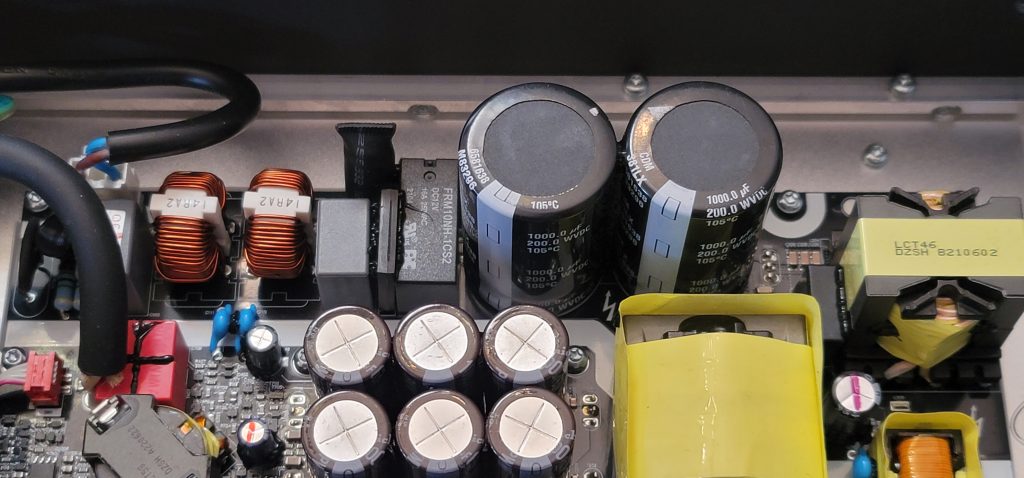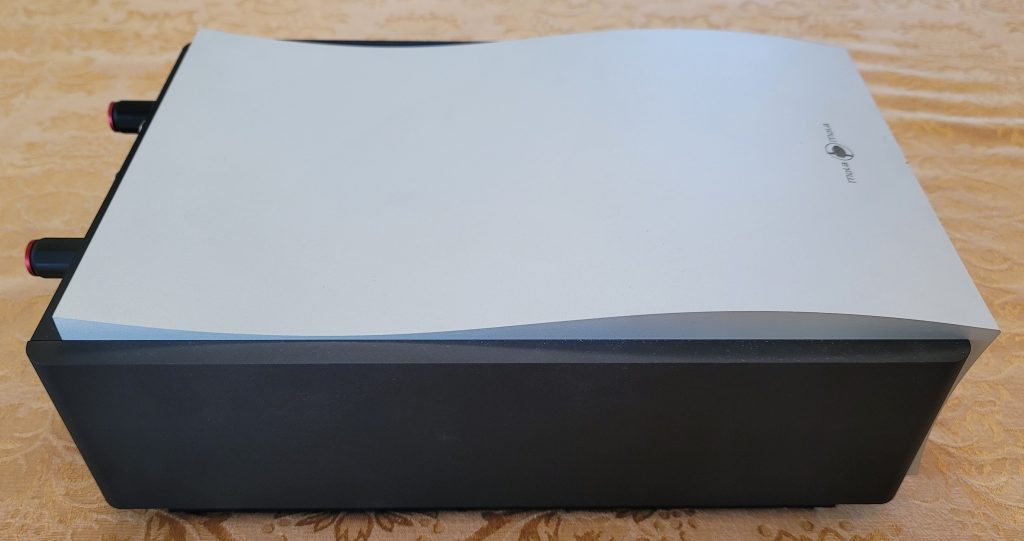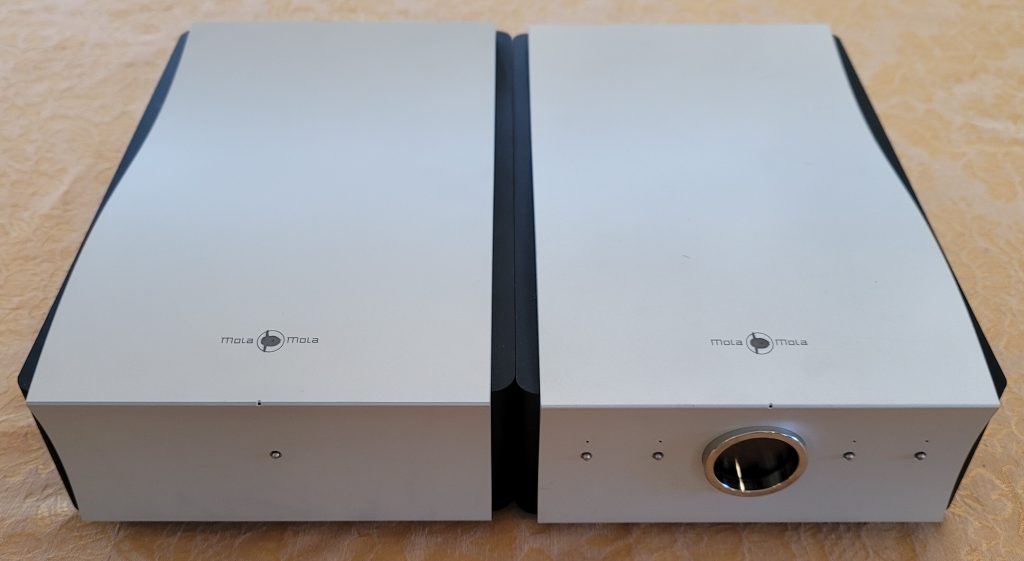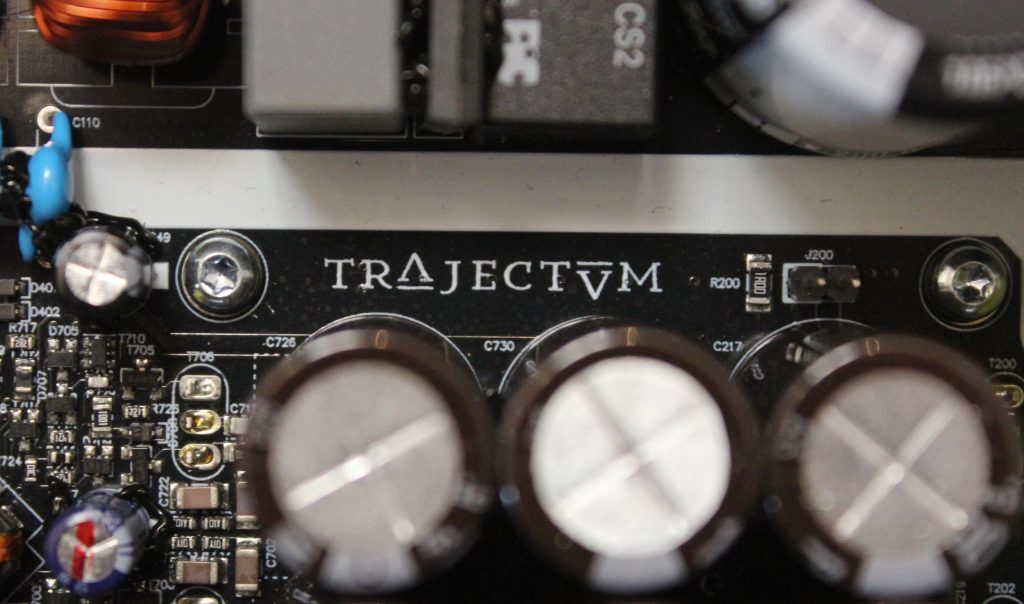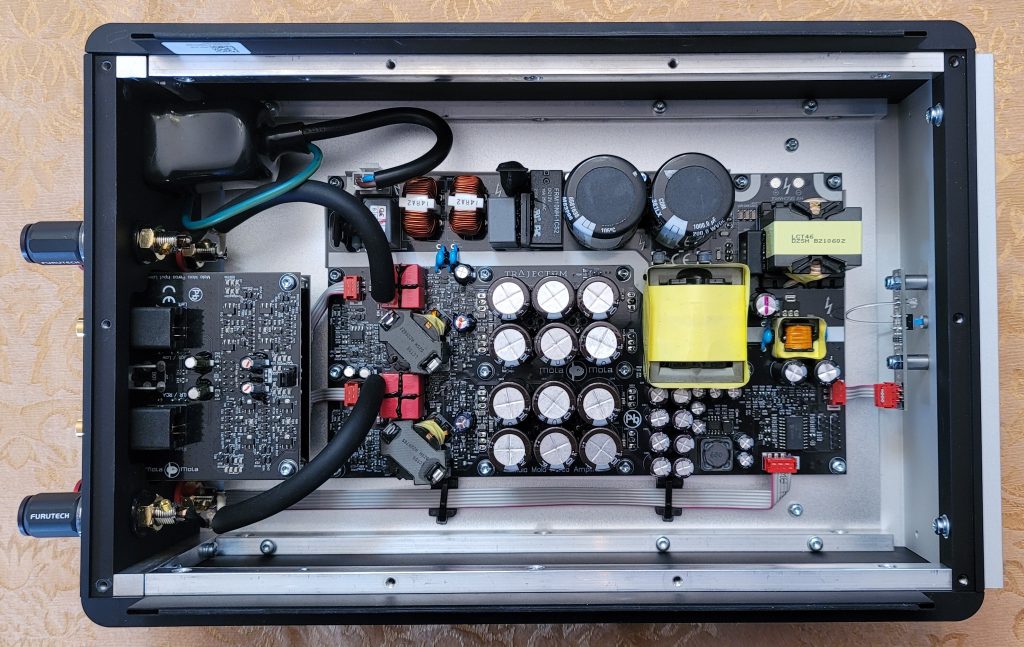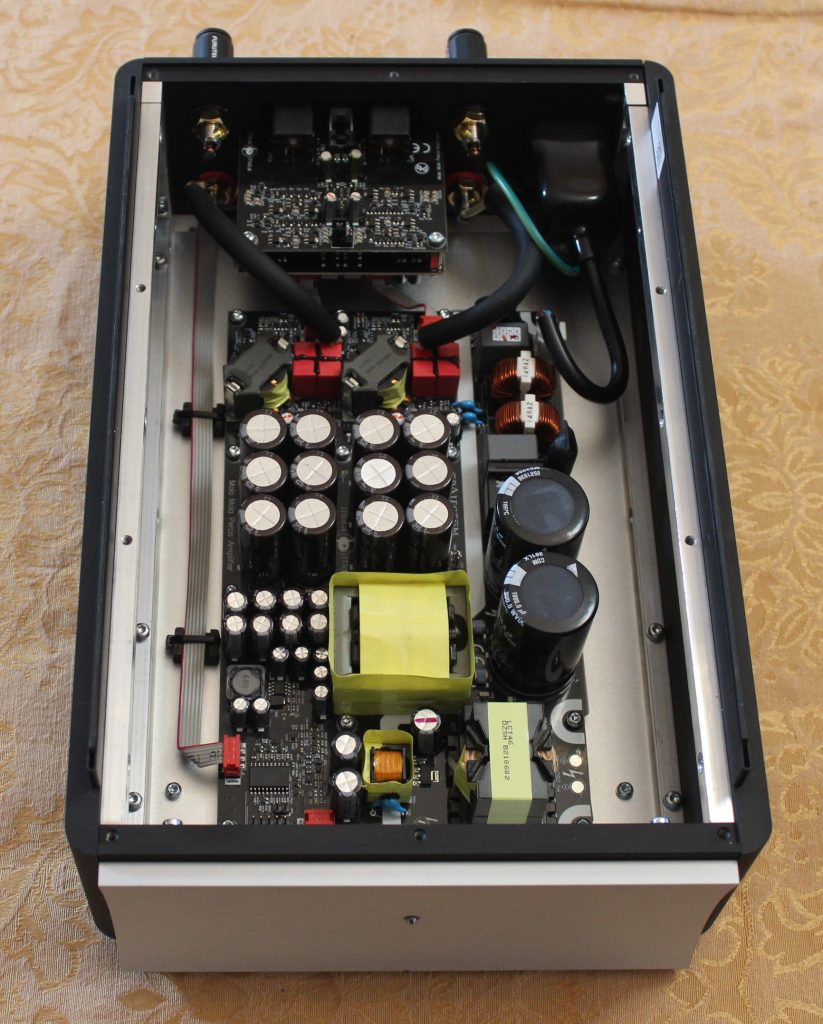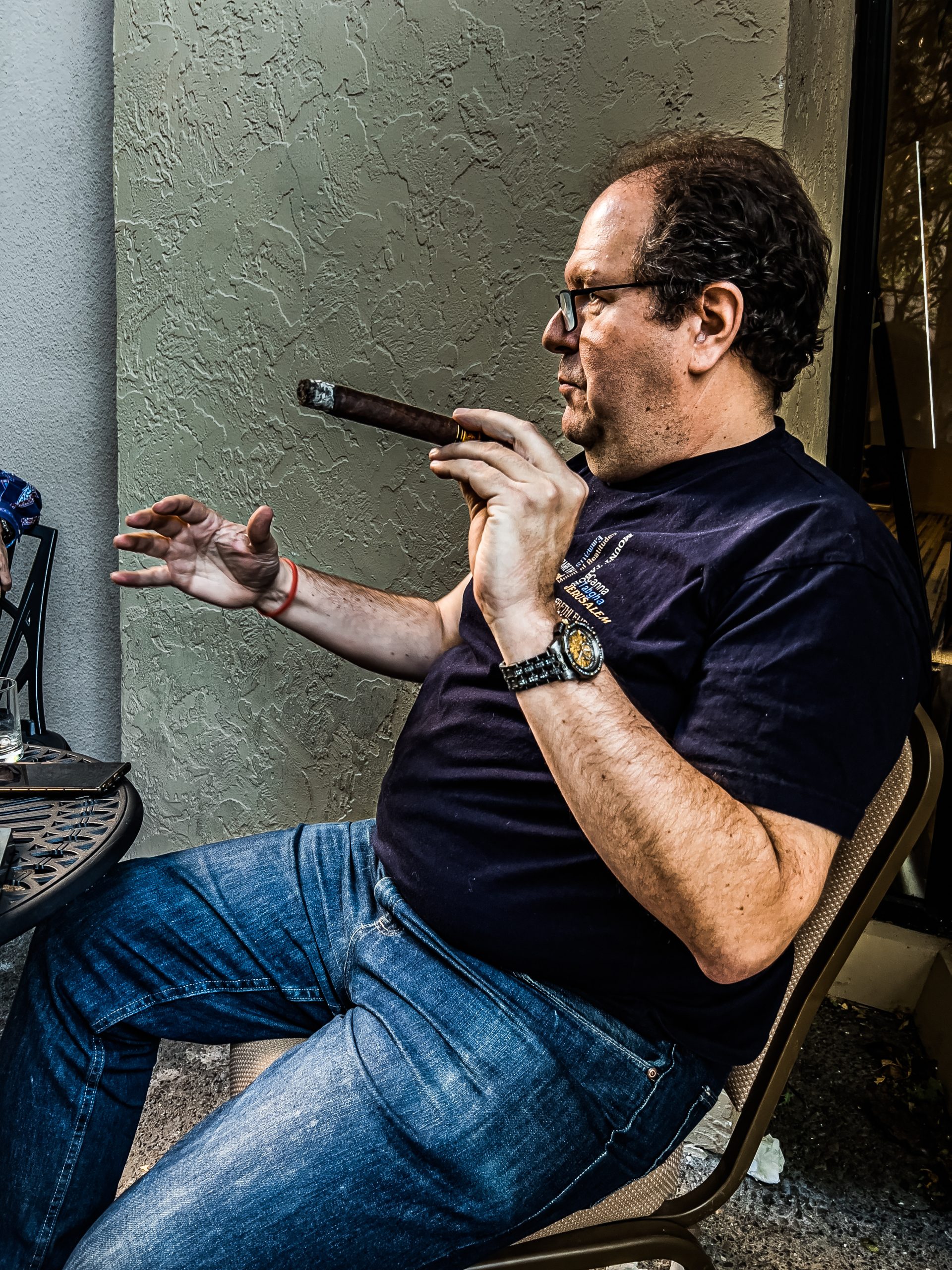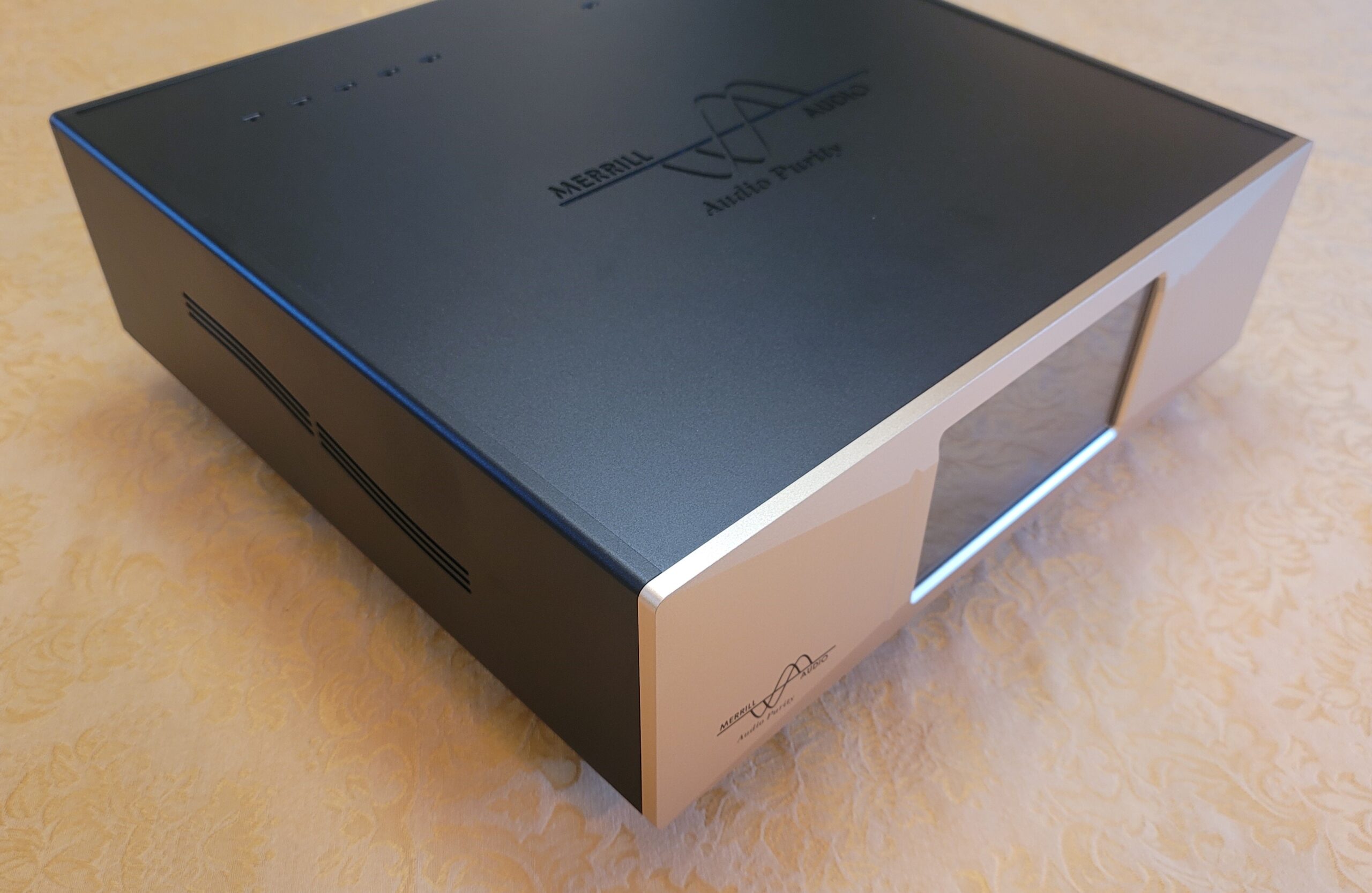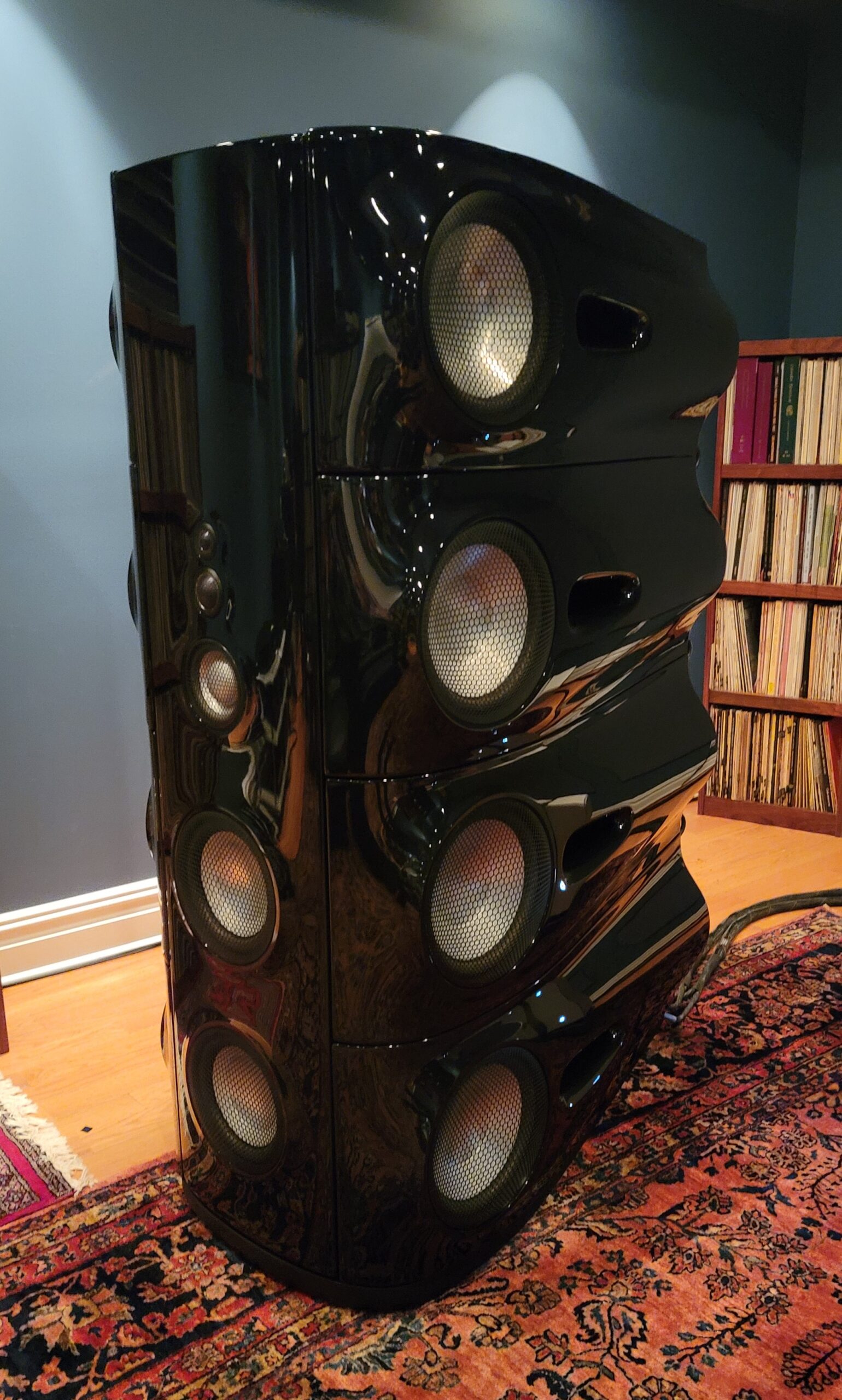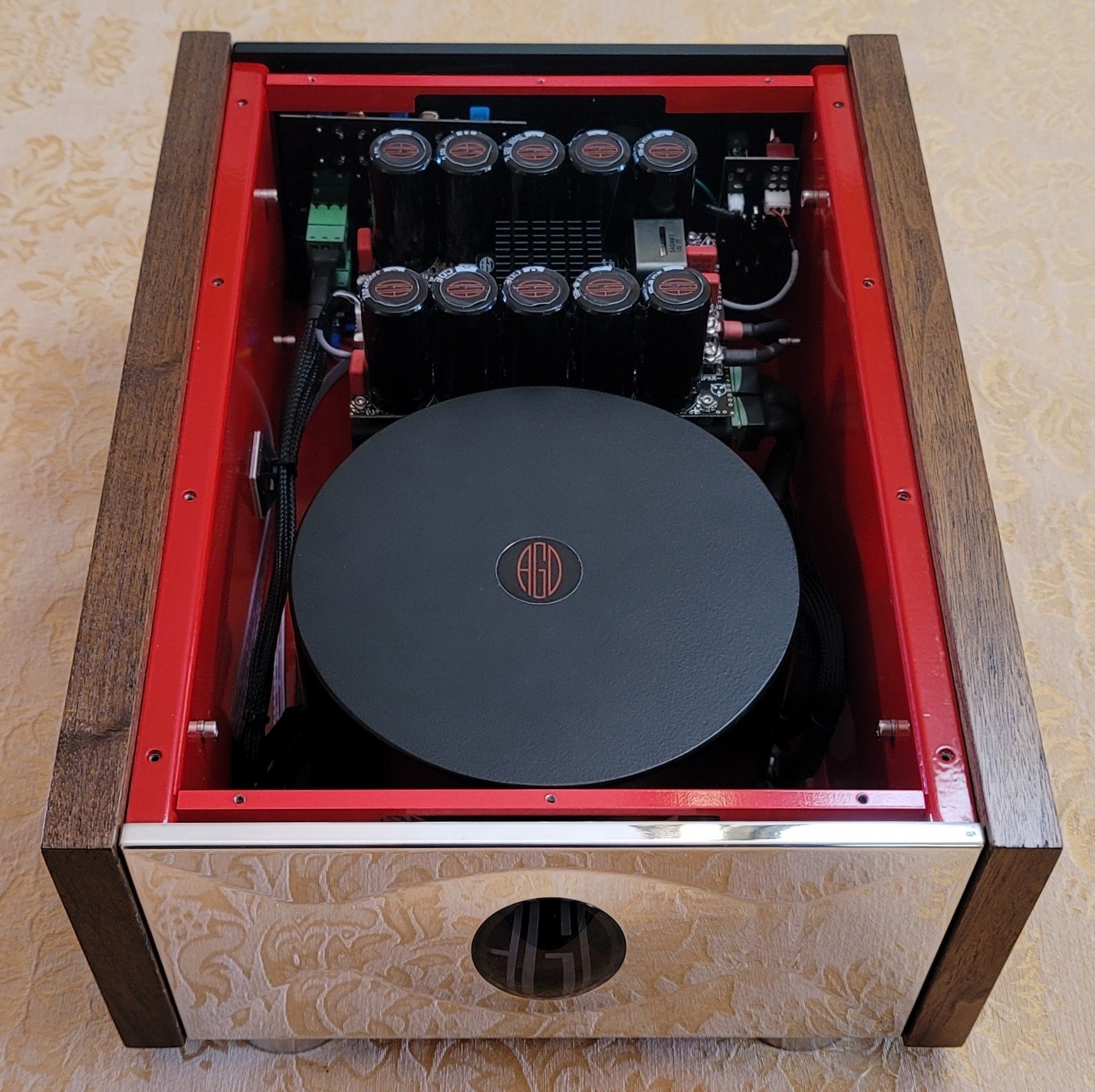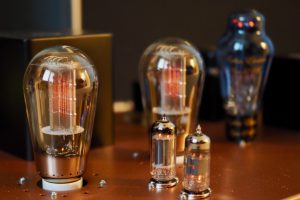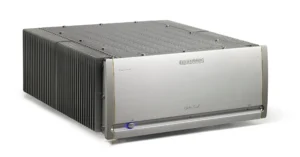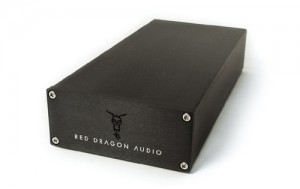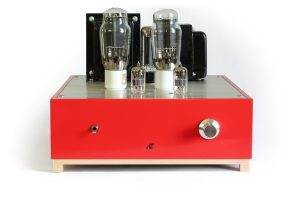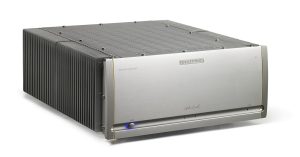Dean Waters at Pacific Audio Fest 2023: A Portrait with a Cigar. (Photograph and image processing by David W. Robinson)
About four months ago I received a Mola-Mola Tambaqui DAC and a Mola-Mola Perca stereo amplifier from Bill Parish at GTT Audio, and I've been using them as my daily-driver since then with much glee and delight. Both the Tambaqui and the Perca are great on their own. When coupled together, they really shine as an absolute best-in-class and price-point pairing that will satisfy even the most demanding listener.
The Mola Mola Perca Stereo Amplifier: Simple and clean
The Perca stereo amp is a high-end class D stereo amplifier. Don't let the class D architecture fool you, though. Personally, I've always been a fan of class A and AB hybrids for their 'always-on' warmth and smooth delivery. Full disclosure here: I was a tad bit skeptical of replacing my class A/AB (which I adore) with something of a different design. Well, despite my past preferences, I was—and still am—completely taken aback with the Perca. To say that I'd never heard a class D sound so pure would be an understatement. I can't recall having heard any amplifier sound this pure and, more importantly, musical.
I'd previously associated class D with what I could describe as "mechanical," "clinical," even "cold." Those characterizations simply don't apply to the Perca. With class D, we're usually willing to trade away the warmth and realism of Class A/AB for efficiency and a somewhat digital profile. Typically, with class D, it all comes down to filtering. The better the filter, the better the result. The Perca completely transcends everything I've come to expect and is able to effortlessly deliver satisfaction that can match and surpass amps of any design class.
Mola Mola's tagline is "Truth Is Beauty." Further defined as "...to build electronics capable of passing a signal with no discernible change at all." Simple in theory, and yet so very challenging to pull off. Happily for music lovers like us, truth be told, Mola Mola seems to have done just that.
First of all, the Perca has virtually zero noise floor. If you have highly resolving speakers, you can tell when your amplifier is powered on. I like to listen to music late at night. When it's quiet both inside and outside of the house. When the air-conditioner and appliances are done for the day and are at rest. I turn down the lights and recline back, close my eyes, and listen. Just listen.
In this environment, you hear everything. This is great for the musical experience. It also means you hear all the things you wouldn't want to listen to, like noise. Noise from the recordings, noise from your components, and most notably noise from your amplifier. Not so with the Perca. In fact, the first time I turned it on I wasn't even sure it was on. As if I didn't have it hooked up properly. The only thing I heard was the small relay "click" from inside the unit as it powered up. Nothing from the speakers. Nothing. Sure, class D will often have a lower noise floor than a class A. But this complete lack of noise surprised me.
Ten minutes into my first listening session with the Perca (André Previn's recording of Poulenc's Concerto for Organ, Strings, and Timpani with London Symphony Orchestra) and I knew I had something special on my hands. All of the things I love about old-timey class A's were there… with none of the drawbacks. No noise, no colorization, no harshness. The amp stays cool to the touch and doesn't act as a room heater, which Class A's are known to do.
Whatever speakers you have, the Perca will drive them with ease. It's rated at 125-watts @ 8 Ohms. Double that for 4 Ohm setups. The maximum harmonic distortion is measured at a microscopic 0.0005% THD. That's max, mind you. Typical THD clocks in at 0.0003%. The signal-to-noise ratio of 128dB puts this amp on a plinth high above the rest. I reflect with great fondness on Telarc's use of 20-bit Soundstream recording some years ago. To my ears those were the best recordings of those days. Even those Telarc's high-end recordings "only" had an SNR of 104dB. And here I have an amplifier sitting in front me that handily beats what was considered the top-of-the-range of not so long ago.
The Tambaqui DAC (left) and Perca amplifier (right), showing the flow of the matching chassis
The Perca will accept either balanced XLR connections, or unbalanced RCA connections. A switch on the back selects between the two. There is a second switch on the back that allows for either a 28dB or a 22dB input gain, depending on the type of DAC/Preamp you're connecting to the unit.
Close-up of back side connectors
The internal AC power supply is rated at a maximum of 800-watts. This is orders of magnitude above what would be required even in the most challenging of circumstances. The massive capacitors on the power-supply board ensure that you won't suffer voltage drops, regardless of the demand placed on the unit.
Close up of capacitors on the power-supply board
Driving a pair of Vivid Audio's Kaya 90's with six separate drivers each, listening to Michael Murray's recording of Messiaen's Dieu parmi nous (from La Nativité) at an elevated volume that is sure to wake the neighbors, I measured a draw of 49.9-watts from the wall, with a power factor of 0.49. At "normal" listening levels, the Perca draws closer to ~19 watts of wall current with these speakers. That's a main benefit of class D, efficiency. Sure, it helps that the Vivid's are also nicely efficient (90dB @ 2.83VRMS at 1m on axis). But you get the idea.
The look of the device, as is the case with all Mola Mola products, is simple elegance. Each of the devices in their product line features the same style of casing, a gentle curve across the top that extends down the front of the unit as a single piece of material.
Side view with the telltale "swoop"
The connections on the back are clearly labeled and easily recognizable. The front power button is a small silver 'dot' about 2mm in diameter that gives a firm and satisfying click when pressed. You can also switch the unit on/off via a standard 12v trigger connection. There is a single LED along the top edge the lights up white when on, and a dim red when off. This same lighting and button philosophy carries through the entire Mola Mola lineup and I'm so glad it does. I can at a glace see the status of the Mola Mola gear without it lighting up the room.
A magnificent pairing: Perca amplifier on the left; matching Mola Mola Tambaqui DAC on the right
Both the Perca amp and the matching Mola Mola Tambaqui DAC share the same half-width chassis cabinet design and look perfectly well blended when sitting next to each other. Neither looks out of place. It's obvious that these two belong together.
Mola Mola and its Malaysian manufacturing partner, Seetek, are part of the Hypex family of companies. Mola Mola and Hypex create the designs and Seetek handles the manufacturing. A short video of the manufacturing facility can be found HERE.
Hypex also caters to the DIY market and makes boards and components for hobbyists via http://diyclassd. Many of the previous generation amp design boards used by Mola Mola can be sourced directly from Hypex. The Perca is the 5th generation of class D amps made by Mola Mola. This new generation features a completely new architecture called Trajectum and is unique to Mola Mola.
Mola Mola's newest creation, the Trajectum class D design
Inner workings: Connection board (left), power supply (top and right), Trajectum amplifier board (center)
Another interior view
Back in 2003, Hypex created a new class D design known as UcD (Universal Class-D). Eight years later Hypex and Mola Mola developed and implemented a newer design, called "NCORE", followed by its successor "NCOREx." The original UcD architecture featured a TDH of 0.02% which was remarkable for 2003. In 2011 the NCORE design dropped the THD to 0.01% THD. Followed by NCOREx at a staggering 0.0006% THD. The new Trajectum drops that in half down to the previously mentioned 0.0003% THD.
When using the Perca, I'd recommend speaker cables with banana plug connectors rather than the spade lug type. Due to the narrow width of the unit, the terminals are somewhat close together. Using cables that come straight out of the back will make setup less cumbersome. I'm using a pair of Kubala-Sosna cables that I adore. They are very heavy and thick with large spade lug screw-down type connectors. When connected to a half-width amplifier such as the Perca, they are somewhat unwieldly.
Nonetheless, the Mola Mola Perca screams excellence in every dimension. If this is your budget range, then you simply must give the Perca very serious consideration!
Perca Amplifier
Retail: $9850
US Distributor
In the US, additional information on the Perca, as with the complete line up of Mola Mola products, can be obtained from their authorized dealer, Bill Parish of GTT Audio.
GTT Audio
908.850.3092
Post scriptum
I'll be submitting a separate review of the Tambaqui DAC, mentioned earlier in this review article. When I had initially set out on this review, I had intended to combine both products into a single submission. However, there was just so much to say about the Perca that it deserved its own place in the spotlight.
That's true of the Tambaqui, as well! Stay tuned!
All photographs by Dean Waters, except the album cover images.





